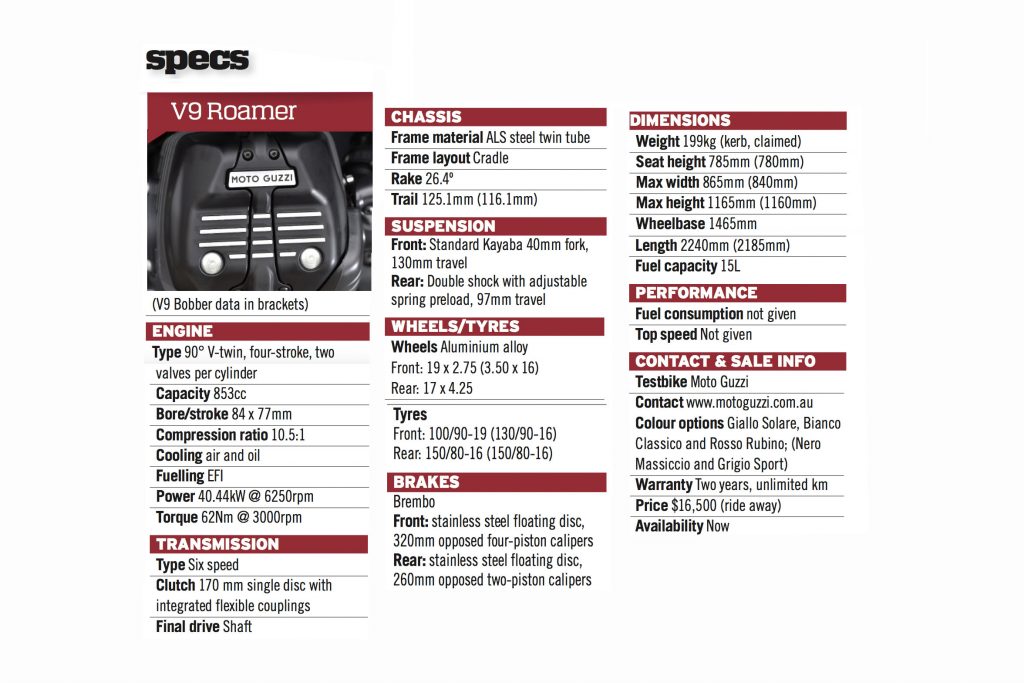It’s not that they look ugly in the photographs, quite the opposite, but in the flesh the classic styling and colours are much more noticeable, there’s plenty to enjoy. And that’s what the new V9 is all about – fun.
The V9 Roamer and V9 Bobber are now available in Australia and I discovered at the recent Australian launch that manufacturers like Moto Guzzi can still make a bike purely for the simple art of easy riding pleasure.
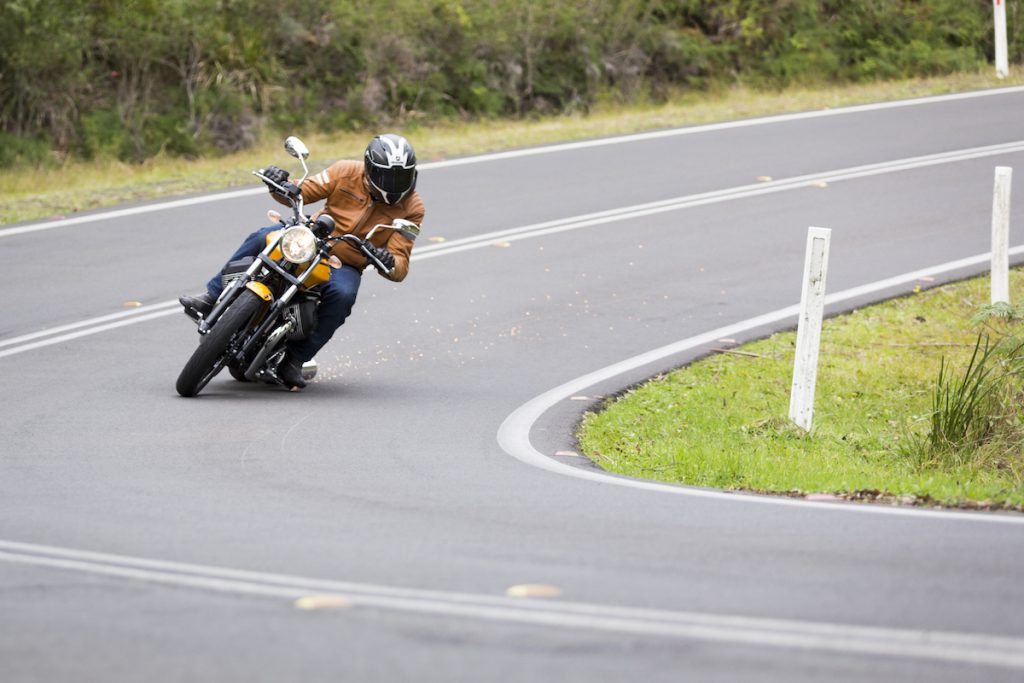
Moto Guzzi is Italy’s oldest motorcycle manufacturer, and at 95 years of age it has plenty of heritage to call on. Interestingly the styling feature which has become synonymous with the marque – the 90° V-twin engine with transverse cylinders and longitudinal crankshaft– is a relative youngster. It first saw light as a 700cc unit for the 1967 V7 model. And these days itjust wouldn’t be a Moto Guzzi without the V-twin. The new V9 is no exception.
Powering the two new models is an equally new small-block engine. The 90º slant of the V remains, as does air/oil cooling and the OHV format. The V9’s 853cc capacity is achieved via an 84 x 77mm bore and stroke that’s larger and longer than the V7’s 80 x 74mm 744cc layout. The new engine is Euro 4 compliant and produces a claimed 40.44kW and 62Nm, a slight but welcome increase on the 35.8kW and 60Nm of the V7 model. The increase in capacity is accompanied by all-new cylinders and cylinder heads, as well as a more robust crankcase.
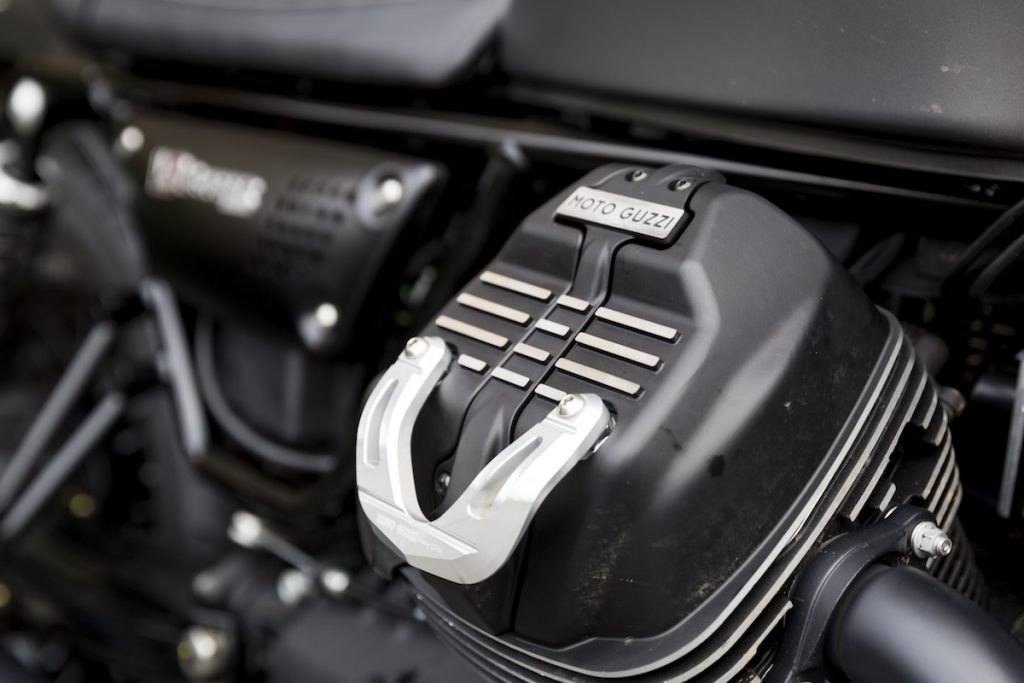
But enough with the numbers, a Moto Guzzi is about style, feel and being a little left of centre. Okay, far left of centre. If you are not a fan of the Guzzi look you may not be swayed by a shiny new toy, but if you find yourself anywhere in the range from strangely attracted to the marque but not sure, through to died-in-the-wool, paid up member of the Squadra Guzzista, you are probably going to like the new V9.
Two models are available: the Bobber and the Roamer. Both have heritage styling, but for me the Roamer more successfully produces that retro-Guzzi vibe with an upright and sweptback handlebar, 19 x 2.5-inch front wheel, 16 x 4-inch rear, and a 755mm seat height that is 5mm higher than the Bobber. The Roamer’s seat also has white piping. The Bobber has a 16 x 3.5-inch front wheel and a 16 x 4-inch rear with balloon style 130/90 R 16 tyres to make the rolling radius a nanometre off the nine-inch 100/90 R 19 combo on the Roamer. The first batch of Aussie delivered bikes are fitted with Pirelli Sport Demon (Roamer) and Continental Conti Milestone (Bobber), however, Moto Guzzi has announced that all future deliveries of both models will be fitted with Pirelli hoops.
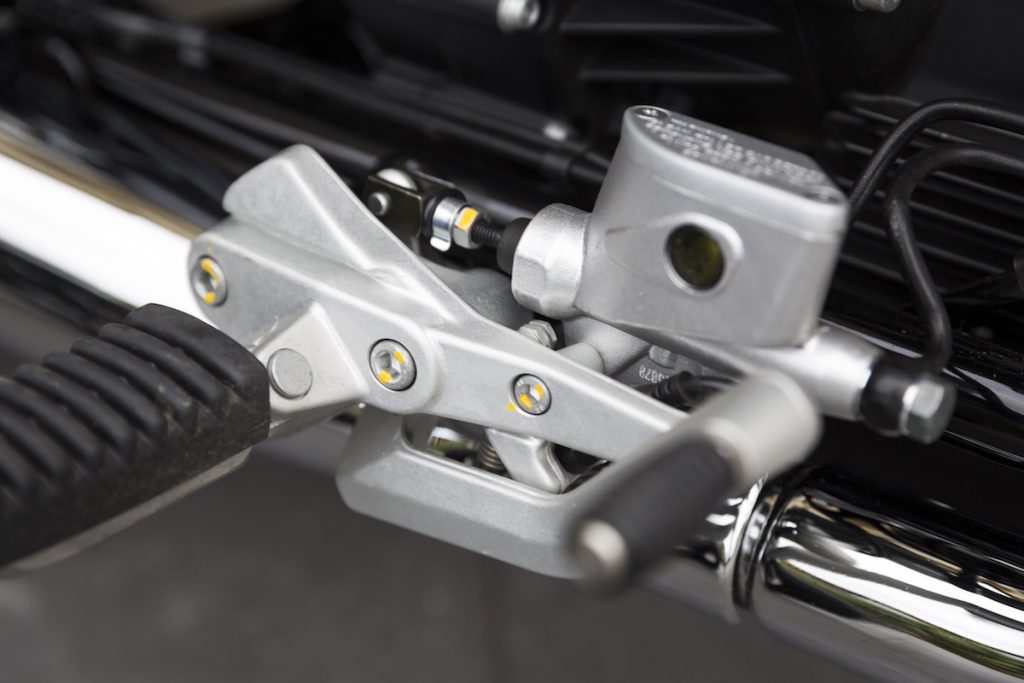
Styling differences aside, both bikes share identical engine specifications and the same tubular steel duplex cradle frame with a cast aluminium double-sided swingarm incorporating the shaft final drive. Up front is a 40mm non-adjustable Kayaba fork and the twin rear shocks are adjustable for preload only. Travel is 130mm front, but only 97mm at the rear. The shorter rear travel was not an issue during the launch, however, anyone thinking of undertaking a serious amount of two-up riding may want to consult the accessories catalogue for aftermarket shocks and possibly a larger seat.
Climbing onto either of these machines is when you get a true feel for what the V9 is all about. Close your eyes and you can imagine being back in the 1950s or 1960s aboard what would have then been considered a large capacity motorcycle. The Roamer, with its more upright handlebar, is the real time machine, and the flat and firm seat on both models gives you the feeling of sitting on the bike, not in it.
The first thing I noticed when preparing to depart for the inaugural ride was the new-look switchblocks on the handlebar. While the black and brushed aluminium design is a modern touch, it works well with the older styling of the bike. The clutch and brake levers look a little too old school, however, and owners would be wise to swap them out with the span-adjustable set from the accessories catalogue, along with bar-end mirrors. The single pod analogue speedo has a digital insert which displays odometer and trip as well as daily trip, which resets when the bike has been idle for eight hours. It also displays the traction control setting. Lights built into the dash illuminate for indicators, high beam and traction control. There is no tachometer – Moto Guzzi says its not a requirement for this style of bike, and after riding it I agree. Instead of a tachometer the V9 has shift lights which can be custom set to illuminate low in the range to advise it’s time to shift down a gear, as well as high totell you it’s time to shift up a gear. This is not an adjustable a rev limiter, that’s set at 7000rpm. Another neat little addition is a USB port located on the frame near the headstock to charge your smart phone on the go. Just don’t let you cable dangle into the hot exhaust like I did.
While all the usual buttons are located in the standard positions, an unfamiliar button on the left switchblock controls the three-stage traction control. Sensibly, Moto Guzzi has not carried over the switchable Turismo, Veloce and Pioggia riding modes from the California 1400 range – totally unnecessary when dealing with just 40kW and 62Nm. Instead the V9 has traction control that can be set at 1, 2 (the most sensitive) or turned off – and you can adjust it on the run. It’s an easy, fuss-free system that works well.

Having been battered by massive storms, the roads around the NSW Southern Highlands were wet and littered with everything from mud to building debris – perfect conditions to test traction control. Despite first gear on the V9 being a little taller than the V7 (and sixth gear a little lower), the V-twin still packs enough punch in first and second gears to get the traction control light flashing. As soon as the system feels traction loss, the spark to engine is interrupted. With the TC off the torque of the engine was enough to make the rear wheel spin on the wet road surface, so adjustable traction makes good sense.
Once you have thumbed the new-look starter button you are greeted by the familiar feeling of the transverse V-twin rocking from side to side. A short blip of the throttle will rock the bike in a way that will warm the cockles of any Moto Guzzi lover’s heart. The lever that actuates the single-disc dry clutch via a cable is light and the gearbox feels smooth and leaves you in no doubt that the next gear in the six-speed box has been selected. One criticism is the clunk you hear when the clutch is engaged on the run.
During the course of the launch I rode three Roamers and two Bobbers, some with aftermarket accessories. While all were in standard mechanical trim the fuel economy figures ranged from 5L/100km to 5.4L/100km.
One of the things I enjoy most about the California is also present in the new V9. Actually it’s something that’s not present: vibrations. As soon as you are underway the rocking and rolling of the engine at idle makes way for smooth performance with a not-too-noisy pop, pop, pop from the twin exhausts. The twin pipes each have their own catalectic converter making an upgrade to some juicy after market pipes child’s play.
Stopping is handled by a single 320mm disc gripped by a four piston Brembo caliper up front with a 260mm disc and a twin-piston caliper at the rear. The system is ABS equipped and while not of sportsbike ilk the stoppers are more than adequate for the 199kg cruiser.
While choosing between the two V9s will most likely come down to which one appeals the most appearance wise, when it comes to riding enjoyment the Roamer is my pick. I felt the Bobber lacked front-end feedback, possibly be due to the smaller wheel/larger tyre and flatter handlebar combo. It could also have something to do with the Pirelli tyres on the Roamer being a little more suited to the bike than the Continental units on the Bobber. Both V9s are restricted by the same peg-scraping shallow lean angle which does curtail spirited riding through the twisty bits, but that’s not what this bike is designed for. For its intended purpose as a good-looking urban cruiser the V9 Bobber and Roamer hit their design brief. At $16,500 ride away the V9 is built to a price point. For the money you get a sharp-looking bike with a sweet engine, gearbox and shaft drive that delivers a super-smooth ride. Look closely and you will find a few cost saving measures like the brake and clutch levers, but when you add the Italian name price premium, $16,500 ride away is only $500 away from where I would have placed it.
What’s to love? A gorgeous looking bike which screams Italian style. The Roamer also looks great dressed up as a tourer which was my favourite ride of the launch. What’s not? A few of the cost cutting measures can be spotted. Both models also have a screw-on fuel cap that cannot be locked. It looks great, but I would prefer to have something that can not be pinched easily.
Would I have one in my garage? I always love something with a unique style and I make no secret of the fact I’m a Moto Guzzi fan. It’s the sort of bike I would use to enjoy a cruise around the city on a Sunny Sunday.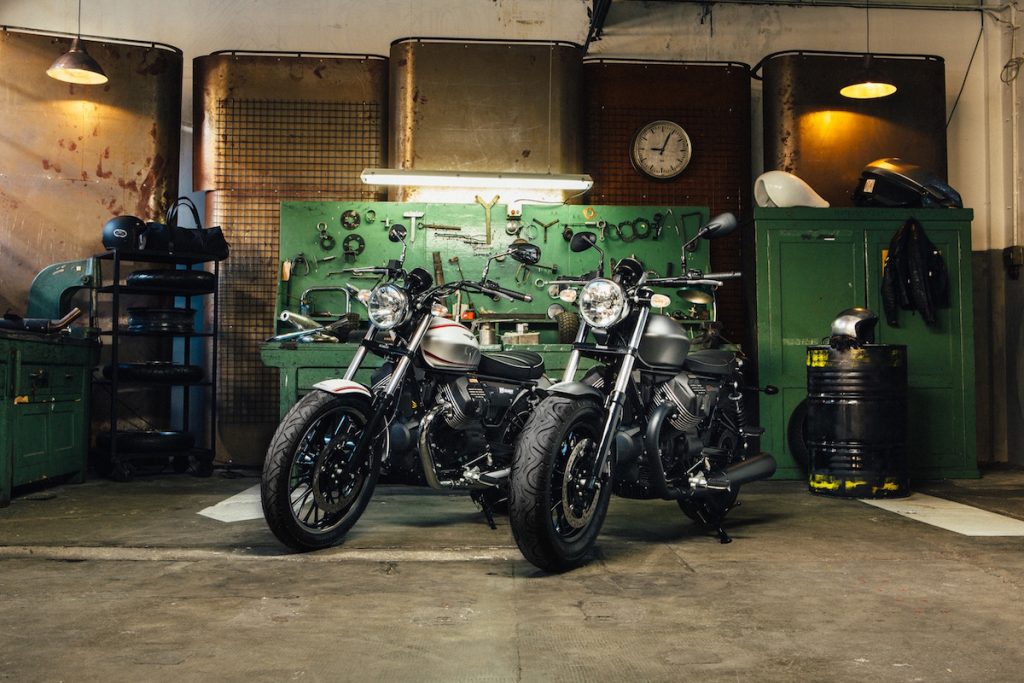
THE V9 IS ALSO FOR GEN Z
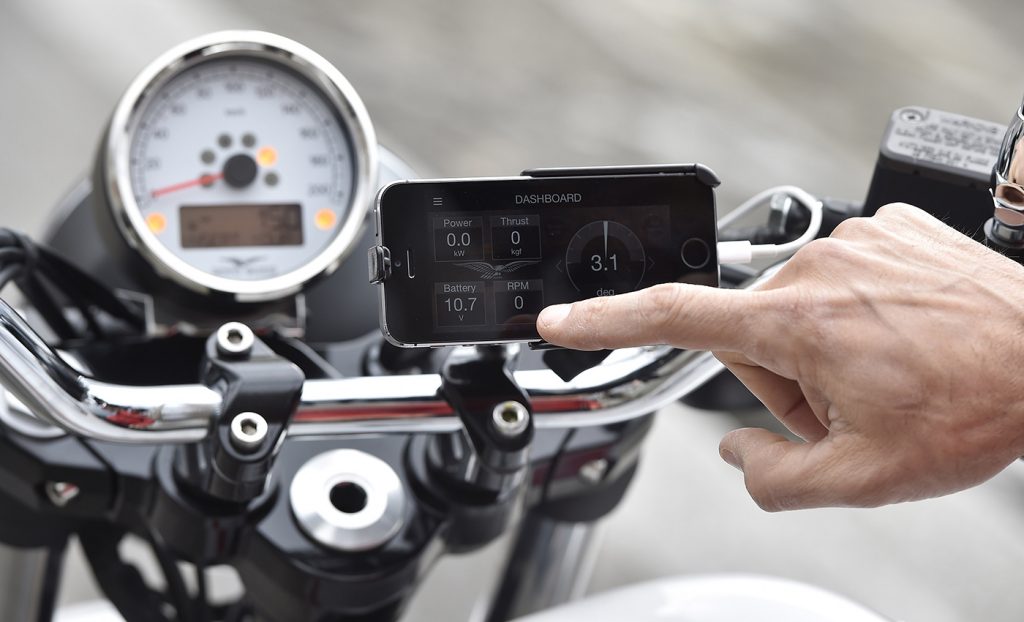
AN OPTIONAL MULTIMEDIA platform called MG-MP is available for Moto Guzzi V9 Roamer and Bobber riders. It’s an innovative system that allows you to connect the bike to your smartphone, and thus to the internet. With this application, downloadable free from App Store and Google Play, your smartphone (both iPhone and Android) becomes a sophisticated on-board multifunctional computer, linking your motorcycle to the internet.
Just place your smartphone into the mounting clip provided by Moto Guzzi, then use the wireless connection to simultaneously view up to five travel parameters. You can select these from a vast menu which includes the speedometer, rev counter, instant power available, instant torque available, instant and average fuel consumption, average speed, battery voltage, longitudinal acceleration, and an extended trip computer. The so -called Eco Ride feature helps limit fuel consumption and maintain what Moto Guzzi calls ‘eco-compatible’ riding conduct, providing a brief assessment of the results obtained during your trip.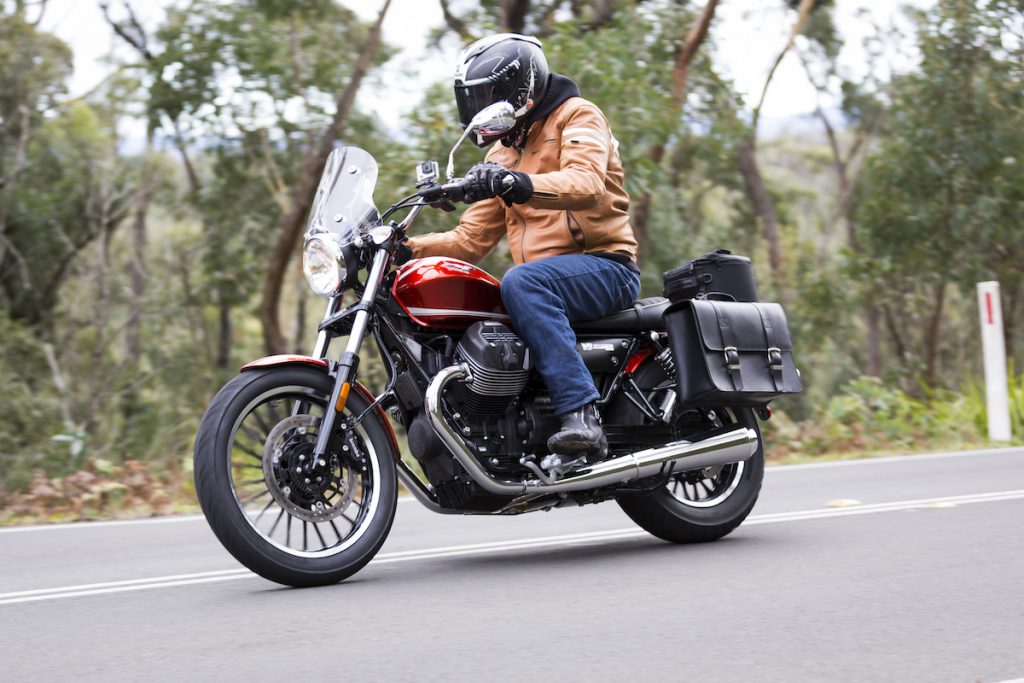
You can record trip data and review it on your computer or directly on your smartphone, analysing the distance covered along with the bike’s operating parameters. The system also allows you to easily locate your motorcycle when you park it in a strange place, automatically saving the position where it was last switched off. MG -MP also includes a Grip Warning function, which replicates the traction control operational data and provides real-time information on road surface conditions. A dedicated indicator light warns in the event of excessive use of available grip. Thanks to the synergistic use of gyroscopes and the data supplied from the motorcycle, the smartphone becomes a sophisticated instrument to measure the lean angle in turns thanks to algorithms developed specifically for Moto Guzzi. The limit thresholds can be set both for lean angle as well as vehicle and engine speed. When these limits are exceeded the relative indicator lights will come on or the virtual dashboard will flash.
